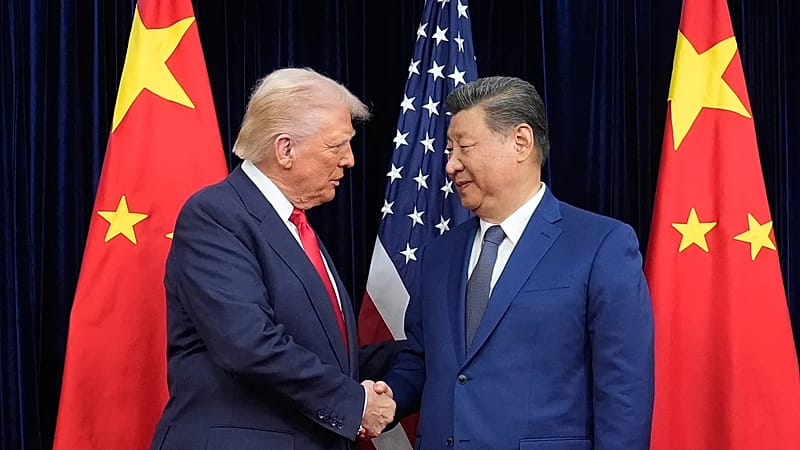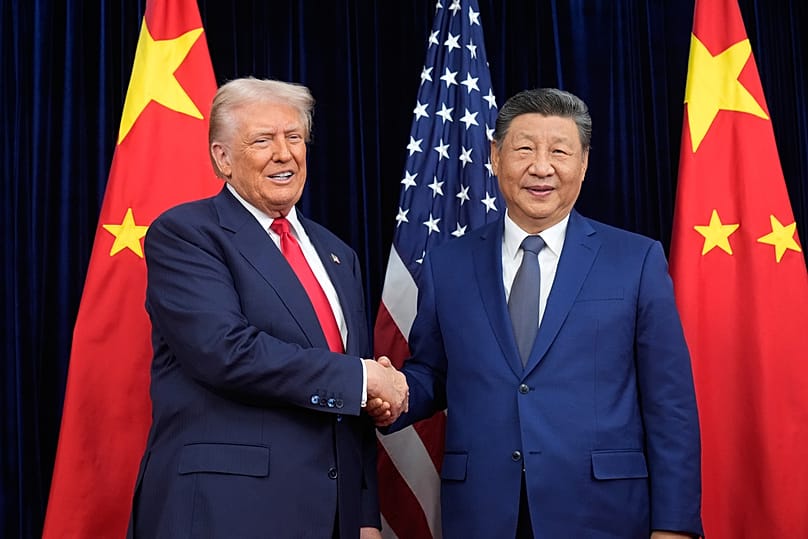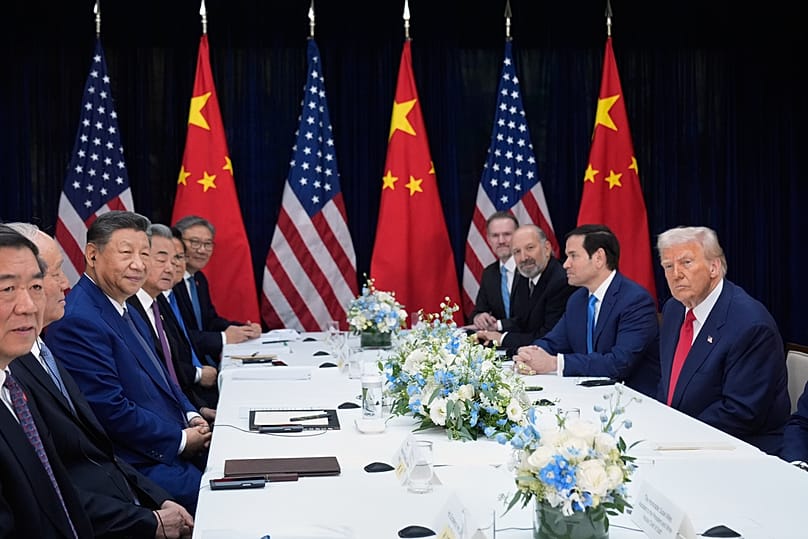Trump announces deal with China after face-to-face talks with Xi in South Korea

US President Donald Trump made a deal during the face-to-face meeting with Chinese leader Xi Jinping on Thursday, the final day of a trip to Asia that offered the leaders of the world’s two largest economies an opportunity to stabilise relations after months of turmoil over trade issues.
Washington and Beijing are "in agreement on many things", Trump said after the meeting that lasted nearly two hours.
Aboard Air Force One on his way back to Washington, Trump provided further details, telling reporters it was a great meeting with Xi, whom he described as a great leader.
The United States will immediately lower tariffs on all Chinese goods that were previously implemented in response to the flow of chemical ingredients for fentanyl into the United States," he said.
Trump said tariff rates on imports of Chinese goods would be lowered to 47% and that China would begin purchasing soybeans in bulk, as previously announced, "which I appreciated".
Beijing had faced new tariffs this year totalling 30%, of which 20% has been tied to what Washington claims to be China's role in fentanyl production.
The announced tariff rates have been volatile. In April, Trump revealed plans to jack up the rate on Chinese goods to 145%, only to abandon them as markets recoiled.
No roadblocks from China on rare earths any more
"All of the rare earth is settled, and that's for the world... This was a worldwide situation and not just a US situation," Trump told reporters. "There's no roadblock from China anymore," the US leader added.
Trump’s aggressive use of tariffs since returning to the White House for a second term, combined with China’s retaliatory restrictions on exports of rare-earth elements, gave the meeting newfound urgency.
There was a mutual recognition that neither side wants to risk blowing up the world economy in ways that could jeopardise their own country’s fortunes.
Earlier, the Chinese leader spoke for longer than Trump in his opening remarks, saying, “It feels very warm seeing you again because it’s been many years.”
“We do not always see eye to eye with each other,” Xi said through a translator, “(but) it is normal for the two leading economies of the world to have frictions now and then.”
However, he said, China and the US “are fully able to help each other succeed and prosper together.”
For his part, Trump heaped praise on the Chinese leader and announced that he will travel to China in April. Xi will visit the US "sometime after that," Trump said, perhaps in Palm Beach or Washington.
How the bilateral meeting unfolded
Shortly after their handshake meeting in Busan, a South Korean port city about 76 kilometres south of Gyeongju, the main venue for the Asia-Pacific Economic Cooperation summit, Trump and Xi moved to a room to hold their talks.
“It’s an honour to be with a friend of mine,” Trump said of Xi. He said the two will be having some discussions, but “I think we’ve already agreed to a lot of things.”
Accompanying Trump were trade representative Jamieson Greer, Commerce Secretary Howard Lutnick, Secretary of State Marco Rubio, Treasury Secretary Scott Bessent, White House chief of staff Susie Wiles, and David Perdue, the US ambassador to China.
Despite Trump’s optimism after Thursday's meeting in South Korea, there remains the potential for significant tensions between the world’s two largest economies.
Both nations are aiming to secure dominant positions in manufacturing and to develop emerging technologies such as artificial intelligence.
And with China being the top producer and processor of the rare earth minerals needed to make fighter jets, robots, electric vehicles, and other high-tech products, analysts and experts fear Beijing's potential chokehold on the world economy.
Today



